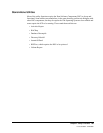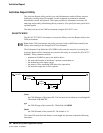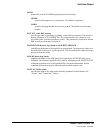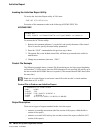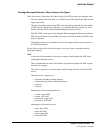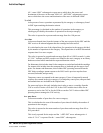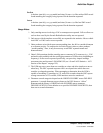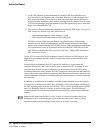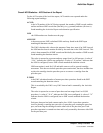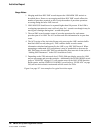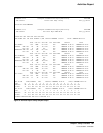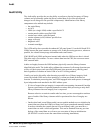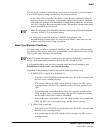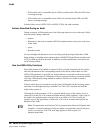
Chapter 4. Utility Functions 193
1st ed., 6/30/04 - 312579601
Earliest
is the date (mm/dd/yy or yyyymmdd) and time (hh:mm:ss) of the earliest SMF record
found matching the category being reported for the duration requested.
Latest
is the date (mm/dd/yy or yyyymmdd) and time (hh:mm:ss) of the last SMF record
found matching the category being reported for the duration requested.
Usage Notes
1. Only cartridge moves involving a CAP or a transport are reported. Cell to cell moves
such as those used by the Scratch Redistribution utility are not reported.
2. Only moves which complete successfully are reported in the statistics. Moves which
incur HSC or LMU errors are not reported.
3. Other products exist which report mount pending time, but fail to consider dismount
as a separate activity. To compare the Activities Report values to other products’
‘‘mount pending’’ time, it may be necessary to add HSC reported mount and
dismount times.
4. Other LSM operations besides cartridge moves consume ACS resources (e.g., CAP
and audit scans probably take the next highest amount of LSM activity depending on
frequency). Scans are not reported specifically, except as they impact cartridge
movement time and increase LSM ARM USE (see “Overall ACS Statistics - ACS
Section of the Report” on page 195).
5. The LSM may move more than one cartridge at a time and often interleaves moves
when busy. The HSC reported response time is an elapsed time which does not
consider overlapped operations. When attempting to determine how the LSM is
capable of mounting 10 cartridges in 125 wall clock seconds when the HSC reports
average mount time of 25 seconds, LSM interleave must be considered.
6. Dismount scratch categories depend on the LIBGEN SLILIBRY macro DELDISP
parameter. A scratch dismount occurs whenever the HSC detects a ‘‘delete’’
dismount and the library is LIBGENed with SLILIBRY macro parameter
DELDISP=SCRTCH. If this defaults to or specifies DELDISP=NOSCRTCH, then
there are no scratch dismounts.
Activities Report



